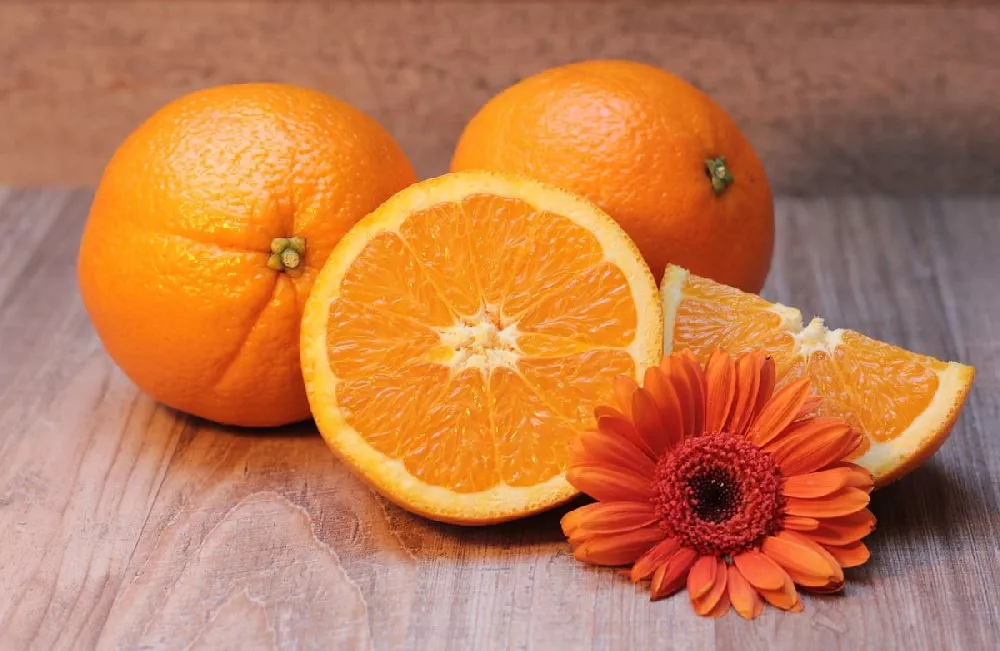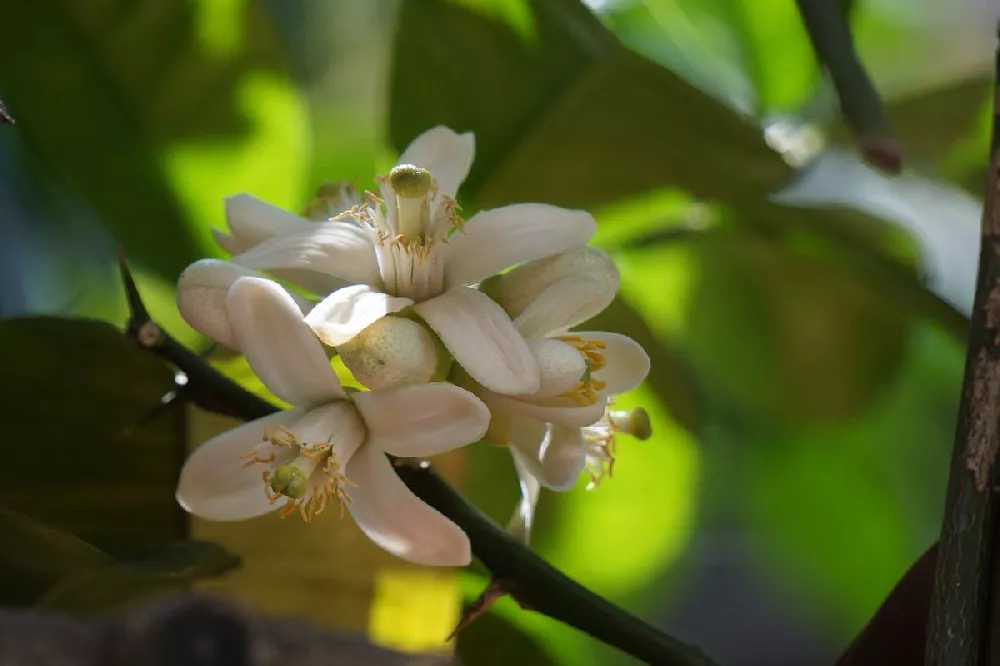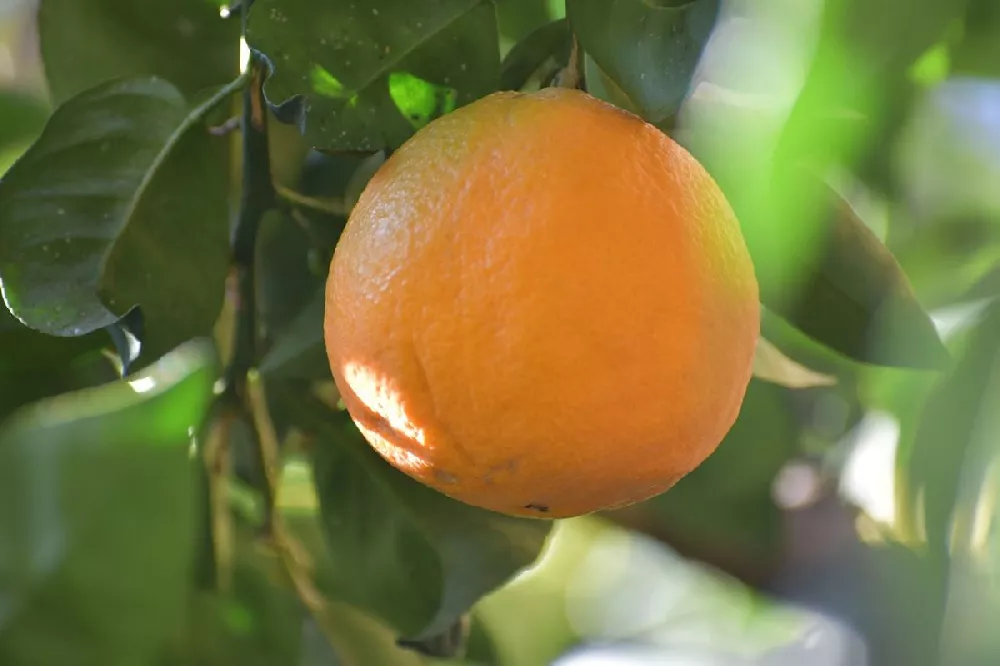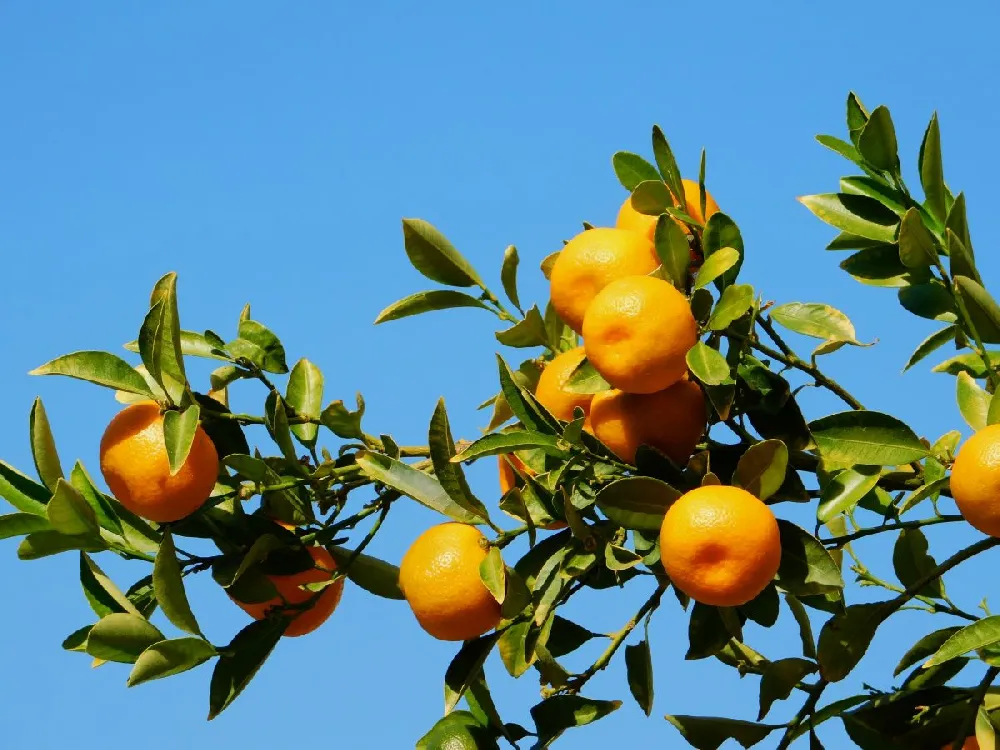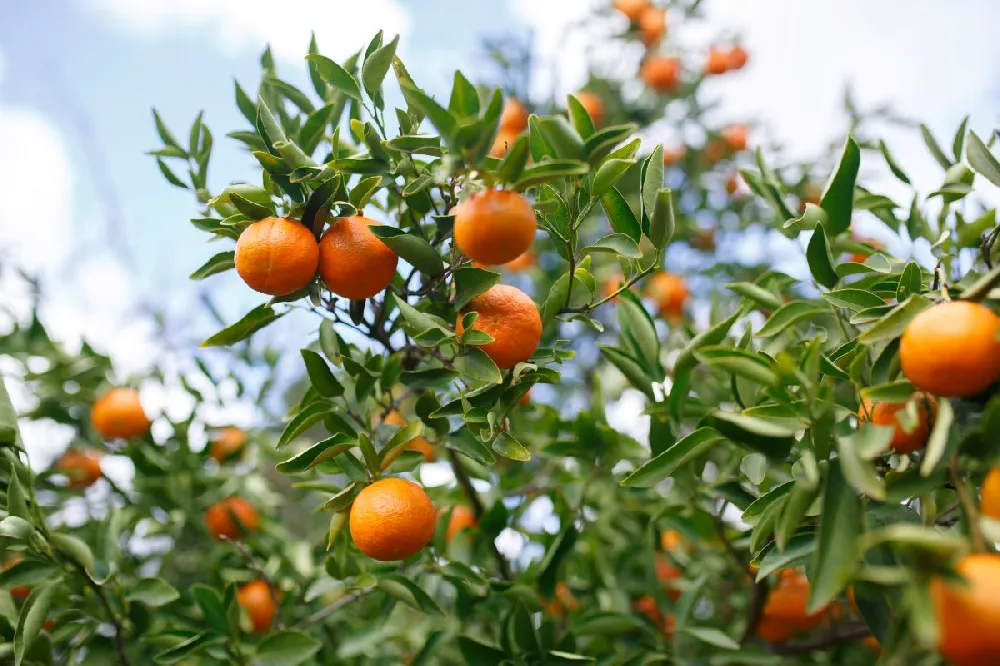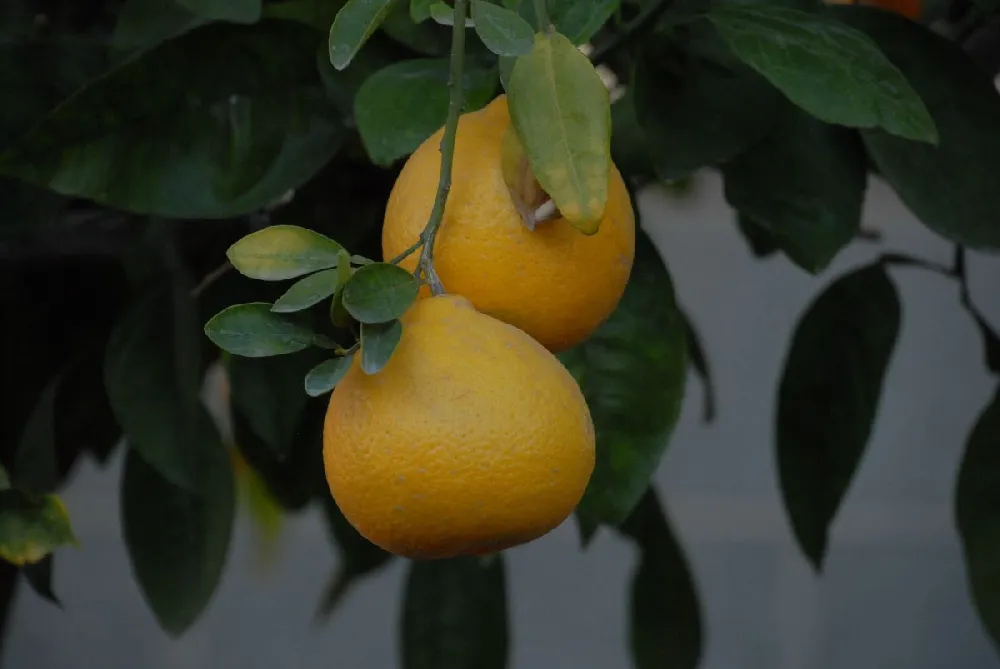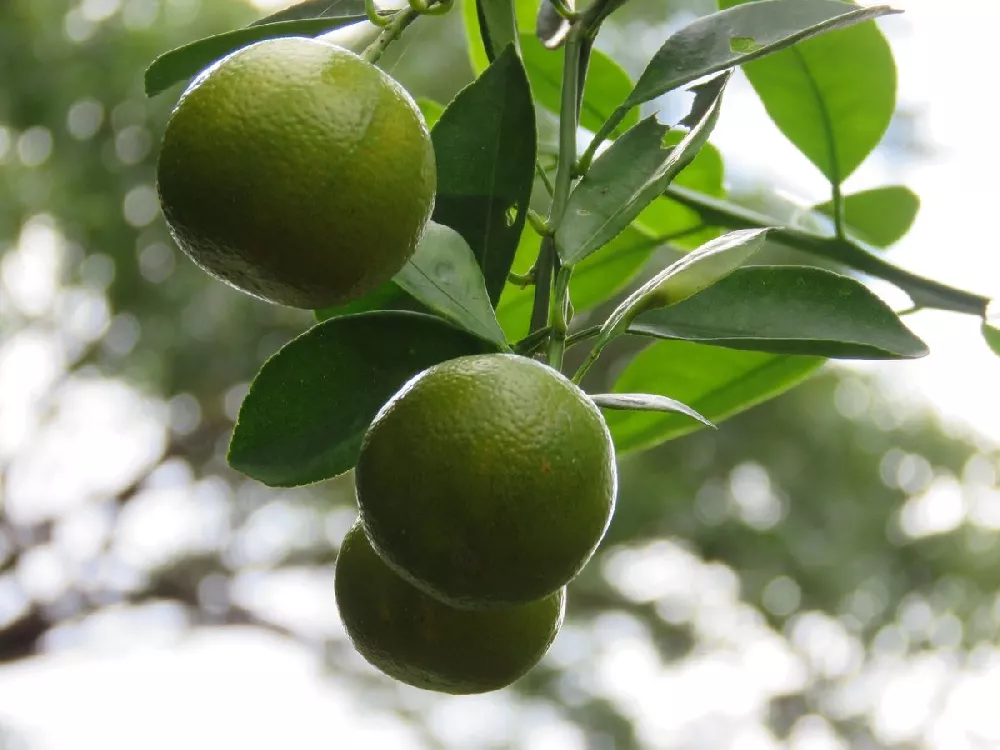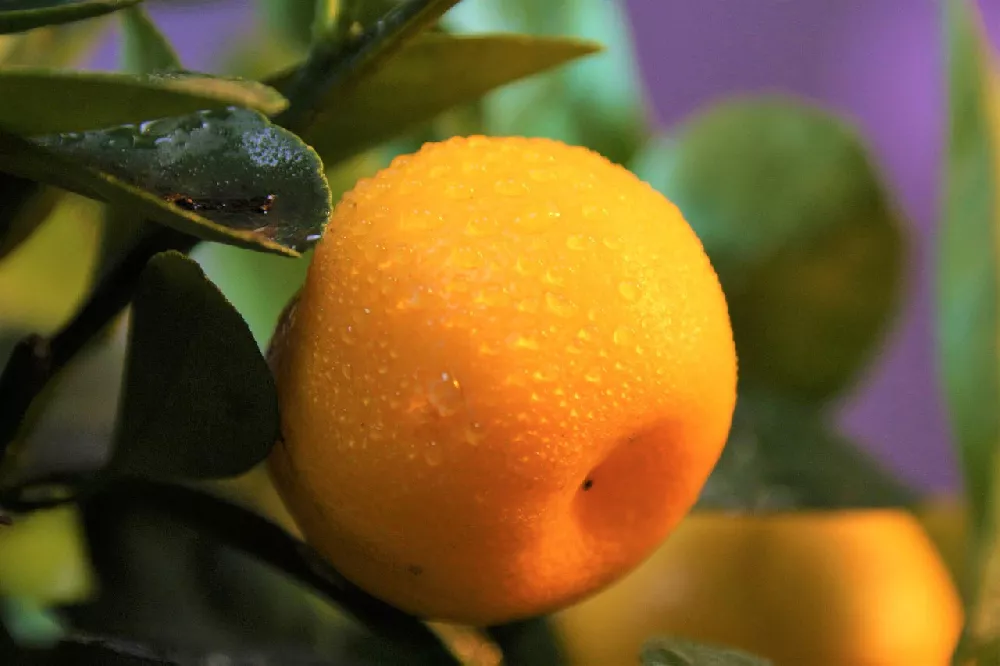- Home >
- Fruit Trees >
- Lane Late Navel Orange
Lane Late Navel Orange for Sale - Buying & Growing Guide
- Ships in 1-2 days
- 1-Year Warranty Eligible
- Pots or accessories are not included unless specified in the product options.
Shipping Details:
Products shipped through FastGrowingTrees.com. Once your order is shipped, you’ll receive an email with a tracking number and estimated delivery date. Most orders will ship immediately.
The Lane Late Navel Orange, known botanically as Citrus sinensis 'Lane Late Navel,' is a small but productive fruit tree that will reward you with many navel fruits during the spring and summer. The Lane Late Navel Orange is also a viable fruit tree option for most growing locations. Since it is small enough to fit in a container, those who live where it is typically too cold to grow navel orange trees can overwinter this plant to keep it alive.
- The Lane Late Navel Orange will give you a long-lasting harvest.
- This plant is small enough to grow in a container.
- The fruits are excellent raw and can make excellent juice.
Plant Care
Sunlight

The Lane Late Navel Orange Tree will grow best when it receives about six hours of sunlight a day or more.
Watering
Once established, water this plant whenever the first few inches of soil have dried out.
Fertilizing

Fertilize multiple times per year, depending on your plant's age, using a balanced fertilizer.
Planting and Care
Planting instructions
You can plant your Lane Late Navel Orange in the ground or in a container. The latter option is necessary for those living in regions with cold winters. If you live in such a region, you should plant your Lane Late Navel Orange in a container that is significantly larger than the root ball to give the roots plenty of space to expand. Regardless of whether your use a container or not, you should plant it where there are at least six hours of sunlight a day and in soils that are well-draining.
Watering and nutrients
Water your Lane Late Navel Orange when the first three to five inches of soil have dried out. At times, this can mean watering weekly. In other instances, such as when rainfall has been consistent, you may need to water this plant as infrequently as once per month. You should start feeding this plant in spring with a balanced fertilizer or one that is made specifically for citrus trees. Repeat the feeding every few weeks when the plant is young. Fertilize about three times per year when your Lane Late Navel Orange is more mature.
Pollination
The Lane Late Navel Orange is a self-fertile plant, meaning that you will need only one if you wish to produce fruits. However, a Lane Late Navel Orange’s harvest can benefit greatly if you plant more than one of these plants. Planting more than one will allow for cross-pollination, which, while not necessary for fruit production, often leads to larger and more numerous fruits during each harvest. If you have to grow your Lane Late Navel Orange indoors for much of the year, it can be wise to perform hand pollination to ensure proper fruit production.
Pruning
The Lane Late Navel Orange is not a plant that needs a lot of pruning. In fact, all you’ll need to do is assess your plant each year and remove only the branches that show signs of disease, are damaged or are clearly dead. Otherwise, your Lane Late Navel Orange should grow well on its own. When you do need to perform pruning, it is best to do so during the winter before this plant blooms and begins to develop fruits.
Pests, diseases and animals
You’ll need to watch out for both pests and diseases when caring for a Lane Late Navel Orange. These issues often begin with some form of insect infestation, which then leads to harmful infections. As such, it is common practice to spray Lane Late Navel Orange plants with insecticides each year. Some people also spray the leaves of their Lane Late Navel oranges when watering to discourage insects from laying eggs in the canopy. When untreated, it can eventually develop many diseases, with anthracnose and citrus stubborn disease being some of the most common.
Harvesting
The harvest time for a Lane Late Navel Orange Tree can fall anywhere from late winter to early summer. Ripe fruits will be slightly soft to the touch and will give off a distinct fragrance. They will also be quite easy to remove from the tree and may fall on their own at times. Typically, these fruits will remain on the tree for months on end without losing their texture or flavor, which means you will have a long period in which you can harvest as many fruits as you like.
Achieving maximum results
The care routine you should use for your Lane Late Navel Orange can vary considerably if you grow your plant indoors. For instance, those who grow it in a container inside will generally need to water more frequently than those who grow it outdoors in the ground. You may also need to conduct hand pollination in indoor settings. For those growing this plant outdoors, it may be necessary to provide some protection for pruning cuts to prevent cold damage.
FAQs
Where does the Lane Late Navel Orange come from?
The Lane Late Navel Orange is a cultivated plant that first came into being in Australia in the 1900s. This plant shares a lot of similarities with the also popular Washington Navel Orange, but it often has smaller fruits with a smoother peel. After emerging in Australia, the Lane Late Navel Orange made its way to the United States, where it became particularly popular in California.
Where can the Lane Late Navel Orange grow outdoors?
The Lane Late Navel Orange can survive temperatures that drop as low as 20 degrees Fahrenheit. This means that this plant can survive outdoors in hardiness zones eight and warmer. Gardeners on the west coast and throughout the south can grow the Lane Late Navel Orange outdoors without issue. Those living in more northern regions should plan to grow this plant in a container and bring it indoors during winter.
What can you do with the Lane Late Navel Orange Fruits?
The most common way to enjoy a Lane Late Navel Orange is to simply remove its outer peel and eat the fruit's flesh raw. However, you can also make excellent juice from the oranges. The thin rind of this fruit also makes great zest and can act as a garnish as well.
Compare Similar Products
You can't add more Product Name - Product size to the cart.
OK